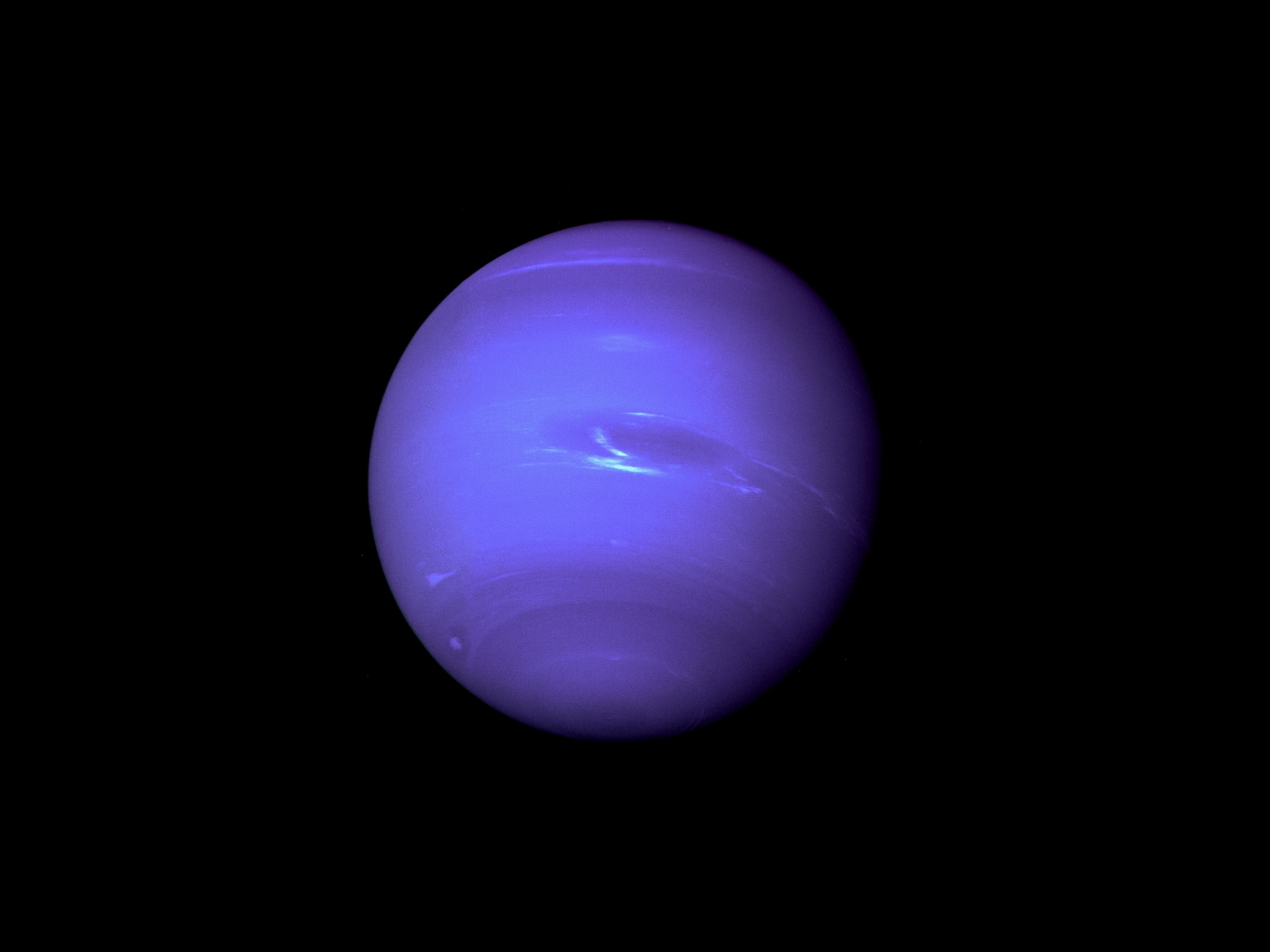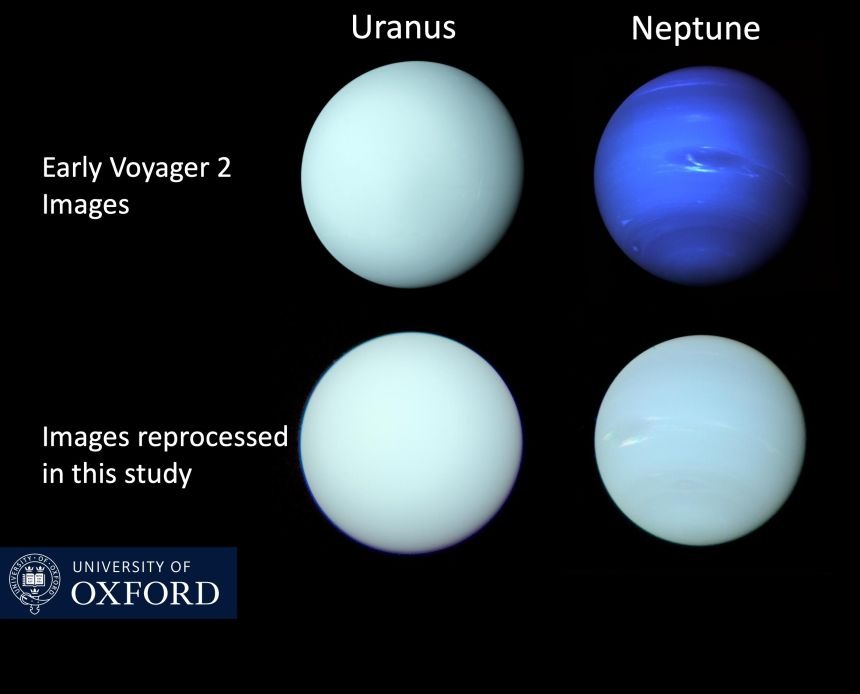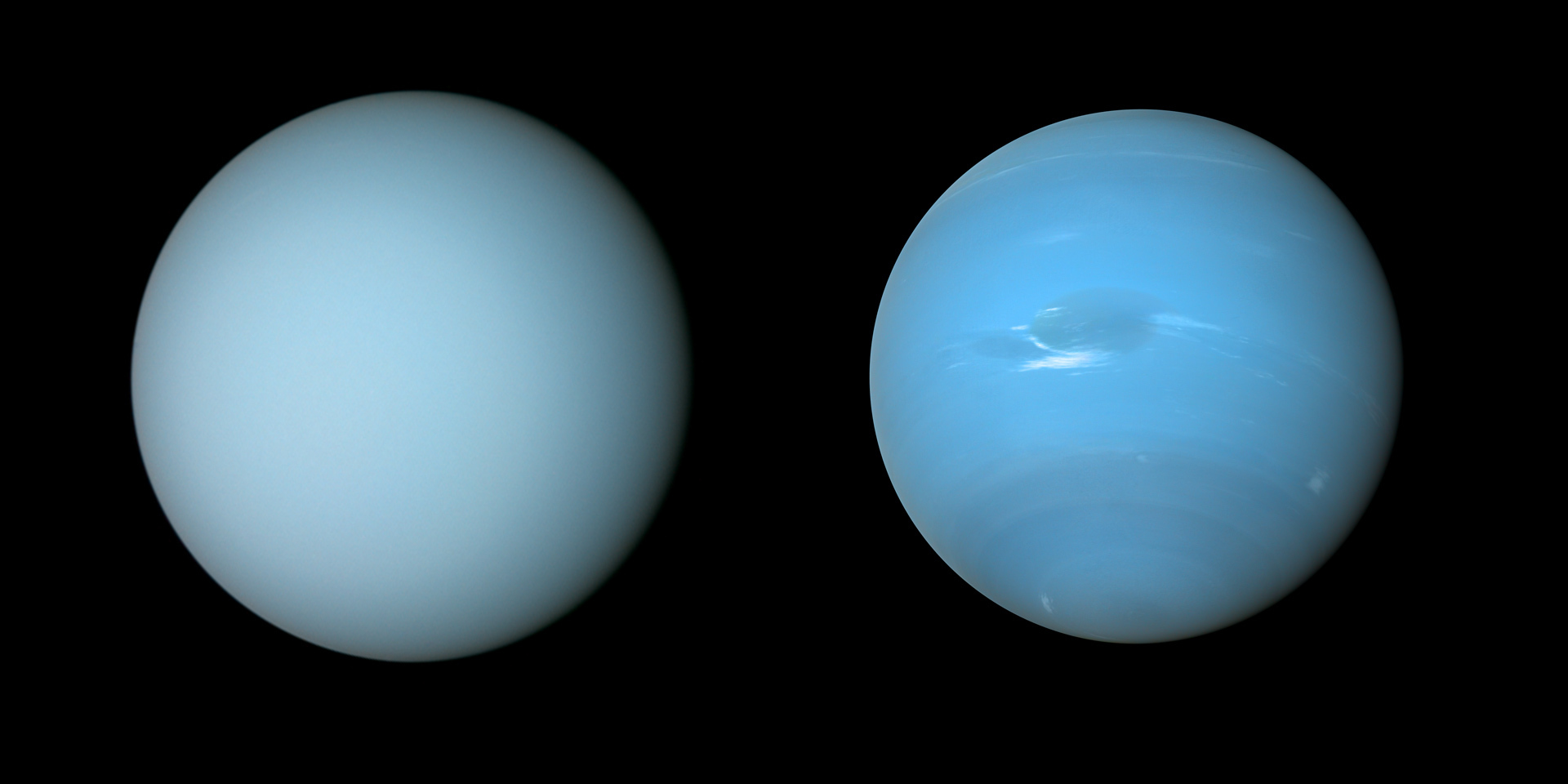One of the most outstanding images captured by the Voyager 2 spacecraft are detailed images of the planets Uranus and Neptune. Over the years, these photos have become the most recognizable, so when we remember these two gas giants, we present them based on images taken by Voyager 2 in 1986 and 1989. These photos show Uranus in pale greenish tones, and Neptune in dark blue. However, new research indicates that these two planets are significantly similar in color, close to pale blue.

Creating accurate color images of space objects is a difficult task due to the specifics of the operation of spacecraft cameras. Instead of recording a color image, the cameras use a series of black-and-white images with filters corresponding to different wavelengths. After that, computers process these black-and-white images with filters to produce a color image. This processing mistakenly colored Neptune dark blue.
According to the main author of the study, Patrick Irwin from the University of Oxford, the planet actually has a lighter color.

“Although the familiar Voyager 2 images of Uranus were published in a form closer to ‘true’ colour, those of Neptune were, in fact, stretched and enhanced, and therefore made artificially too blue. ven though the artificially-saturated colour was known at the time amongst planetary scientists — and the images were released with captions explaining it — that distinction had become lost over time. Applying our model to the original data, we have been able to reconstitute the most accurate representation yet of the colour of both Neptune and Uranus,” explained Patrick Irwin.

The newly processed images above show that Uranus and Neptune look much more similar. The researchers used new data from telescopes such as Hubble and VLT to coordinate the original Voyager 2 images. In addition to the new colors, the results of the study also provide answers to the question of why the color of Uranus looks different at different points in its orbit. The reason is that the planet is almost completely tilted, and the reflectivity of the poles affects its brightness.
Earlier we talked about 12 interesting facts about Neptune.
According to Monthly Notices of the Royal Astronomical Society
Follow us on Twitter to get the most interesting space news in time
https://twitter.com/ust_magazine


